Diseases and pests in olive trees: ecological remedies
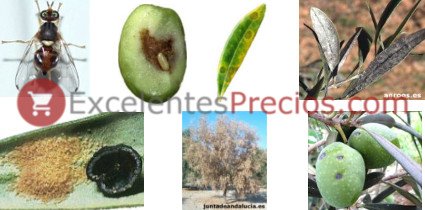
Hello Agroguerters, a few weeks ago we talked about how to put an olive tree in your garden. As you know, to grow any plant it is necessary to know the pests and diseases that most commonly affect them. In this case we will see the diseases and pests in olive trees and some ecological remedies to combat them.
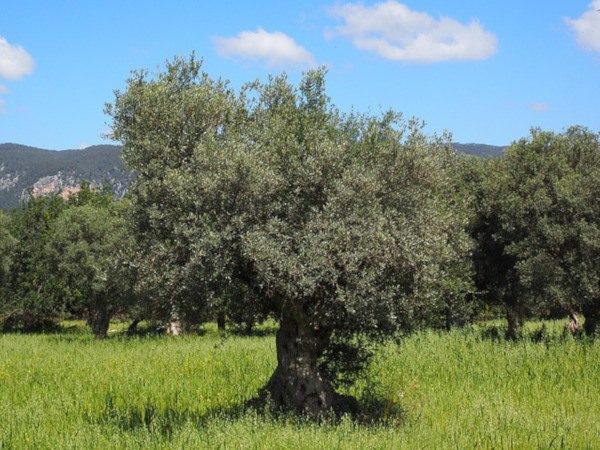
Next we are going to see how to combat the most common pests and diseases of the olive tree in an ecological way:
1. Olive pests
1.1. Olive fruit fly: Bractocera oleae
The damage at first sight is caused in the olives where we can see dark areas. Inside the olive there are galleries formed by the larva, and the fruits detach very easily from the tree.
The secondary damages due to the wound in the skin of the olive are, the colonization of the same by fungi or viruses and finally reaching putrefaction. It is very important to prevent this pest because it causes a lot of losses.
For this, it is advisable to leave the nearby wild flora, especially if it is thistles, olive groves, mastic, etc.), avoid the presence of manure if it is a farm, do not apply excessive nitrogen fertilizer, advance the harvest as much as possible and Place sticky traps that are yellow in color or impregnated with pheromones.
If the pest is already in our olive crop, we must treat it, for example, with its natural enemies such as Pnigallo mediterraneus or fungi such as Beauveria bassiana.
Another option is to use 2-4% kaolin clay coating the fruits, this can be found in specialized garden stores.
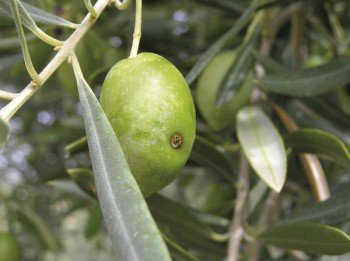
1.2. Olive moth or Prays: Prays oleae
The pest can be monitored at all times of the year, because during the life of the insect while it is staying in the olive, it causes visible damage at all times.

Therefore in autumn winter small holes can be seen in the leaves; in spring the flowers are attacked and at the end of the spring it penetrates the fruit and the seed, so that during the following autumn the affected fruits fall without being ripe.
If the summer is very hot, we will be in luck, since high temperatures negatively affect these insects, causing the death of their larvae.
To prevent the olive moth, it is advisable to use plates impregnated with pheromones and leave a plant cover, especially when it is in bloom, as it attracts moths.
To treat the plague, natural enemies such as lacewings or birds that feed on this type of insect, bats, etc. can be used.
The treatments should only be used in the generation of insects that affects the end of spring when the insect enters the interior of the fruit. Kaolin clay at 2-4% can be used as in the previous case.
1.3. Soot mealybug: Saissetia oleae
This cochineal is considered the third most important pest of olive trees in Spain. It is usually found linked to a group of fungi called soot, hence its name.
They will cause damage to the tree by inserting their mouthparts to extract the sap and thus feed. In addition, these cochineals secrete molasses that serve as food for other living beings, especially the black and soot fungi, which will also cause damage.
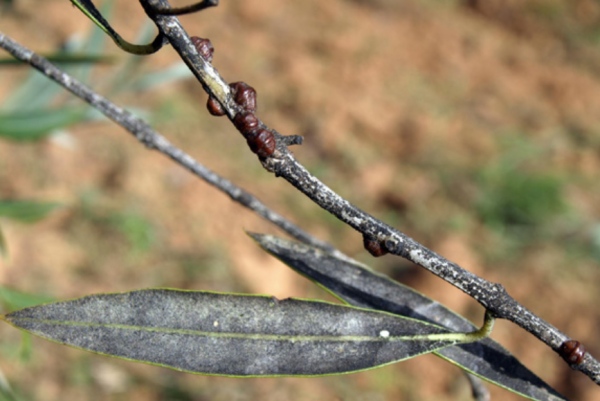
It is advisable to adopt measures to prevent their appearance, such as reducing the density of trees in humid climates, pruning to increase aeration and not using nitrogenous fertilizers in excess. Normally with these preventive measures, added to the action of the autochthonous natural enemies, it is enough to exert an effective control in non-intensive olive plantations.
1.4. Olive borer: Phloeotribus scarabaeoides
It is a small dark brown beetle that lives on the branches of the tree. Its presence can be noticed by the small remains of sawdust that it leaves when making the holes towards the interior of the branch, where the eggs are left, which hatch about 2 months later.
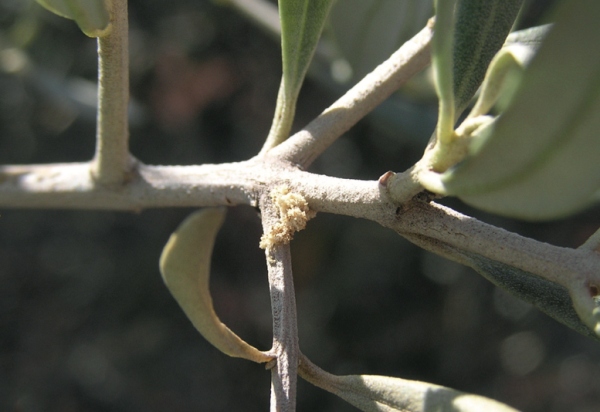
The damage, therefore, is the dry branches and the progressive weakening of the entire tree, which leads to its death in the medium-long term.
As prevention, it is advisable to carry out pruning at the end of winter (the lunar calendars can be consulted); get rid of the pruning remains without adding them to the compost, you can make a bait in the month of March-April, leaving piles of sticks on the ground and get rid of them at the end of spring.
To treat the borer, the most effective is to use natural enemies such as Eurytoma morio or to treat with natural insecticides.
2. Olive diseases
2.1. Repilo: Spilocea oleagina = Fusicladium oleagineum
The repilo is a disease caused by the fungus Fusicladium oleagineum, which only affects the olive tree.
This pathogen produces spots of dark tones and circular shapes on the upper surface of the leaves. These spots may take on yellowish tones towards the edges. Stains will also appear on the underside, but without a defined shape and concentrated on the nerve.
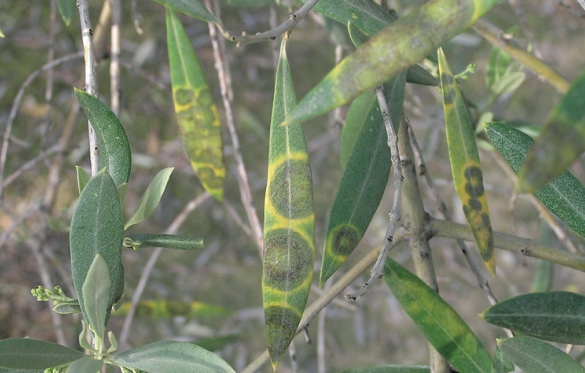
As control and prevention measures, it is convenient to carry out pruning that favors aeration, not abusing nitrogenous fertilizers and/or using fungicides that contain copper.
2.2. Olive scab or tuberculosis: Pseudomonas savastanoi
Olive tuberculosis is caused by a bacterium called Pseudomonas savastanoi. It is a fairly easy disease to identify, since its symptoms are very characteristic: the appearance of tumors or lumps on the branches and shoots.
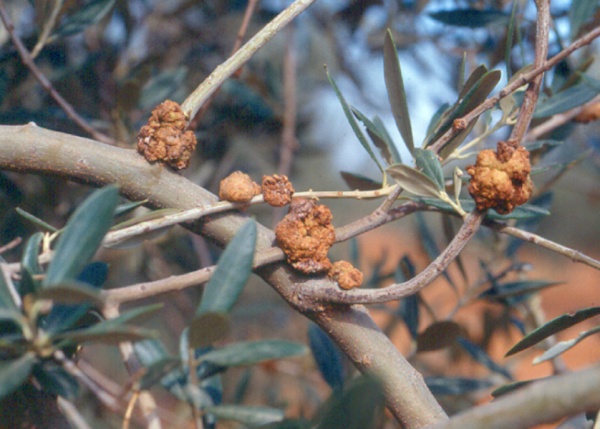
Very humid environments greatly favor the appearance of scab. To avoid it, varieties resistant to it must be used and, as far as possible, do not prune or harvest on rainy days.
To treat scab, the best is Bordeaux mixture or ecological compounds that have copper salts, this should be used after pruning and harvesting.
23. Verticillium wilt: Verticillium dahliae
Verticillium wilt is a disease caused by the fungus Verticillium dahliae that can affect numerous species. Its importance is due to the difficulty in combating it once it appears, in addition to the fact that it is capable of surviving for several years in the soil in the absence of a host.
The main symptoms that verticillium wilt produces in the olive tree are apoplexy and slow decay. The leaves lose their green color and acquire yellowish tones, and defoliation of the tree may occur. Although, these are not very specific symptoms to make a clear diagnosis of the disease, so in many cases a laboratory analysis is necessary.
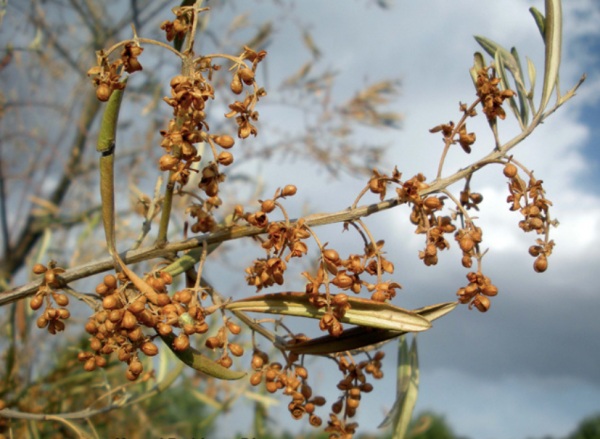
It is vitally important to pay special attention to preventive measures, since, once the disease appears, it is practically impossible to eliminate it. Some of these measures are:
- Remove all infected parts of the tree, including already fallen leaves.
- remove weeds
- Reduce the irrigation dose
- Carry out applications of organic matter and techniques that reduce erosion
- balanced fertilization
- soil solarization
2.4. Anthracnose or soapy olive: Colletotrichum spp.
Anthracnose is a disease caused by two species of fungi: Colletotrichum gloeosporioides and Colletotrichum acutatum, whose incidence is favored by humidity.
One of the symptoms is the rotting of the olives, being more likely in those that have a higher degree of maturity. The second most common symptom is the desiccation and wilting of the leaves, which may cause them to fall.
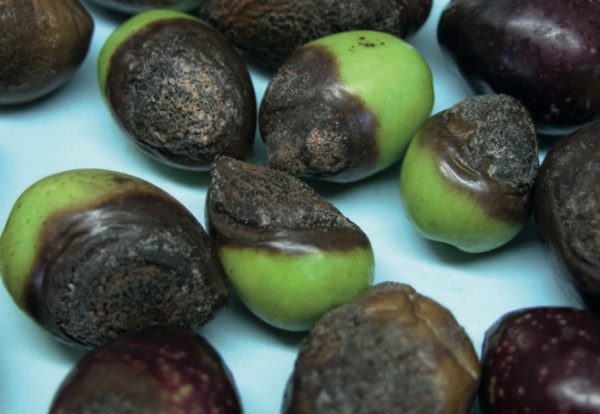
As in the previous cases, it is important to take prevention measures into account, using resistant varieties, eliminating infected parts, even those that have fallen to the ground, and in general any practice that can reduce relative humidity.
3. References
- Van Steenwyk, RA, L. Ferguson, and FG Zalom. November. (2002).UC IPM Pest Management Guidelines: Olive (Insects and Mites). Oakland: Univ. Calif. Agric. Nat. Res. Publ. 3452.
- Sibbett, GS and L. Ferguson. (2005).Olive Production Manual. Oakland: Univ. Calif. Agric. Nat. Res. Publ. 3353.
- Vossen, PM (2006).The Spanish “OLIPE” Trap for Olive Fruit Fly. (PDF) UC Cooperative Extension leaflet, Sonoma Co.
- Vossen, PM (2007).Organic Olive Production Manual. Oakland: Univ. Calif. Agric. Nat. Res. Publ. 4969.
- Barranco, D., Fernández-Escobar, R., & Rallo, L. (2017).Olive cultivation. Mundi-Press editions. 7th Edition. 1008 pages.
- Ministry of Agriculture, Fisheries and Food. (2014).Integrated Pest Management for Olive Groves. Madrid: MAPA Publications Center. https://www.mapa.gob.es/es/agricultura/temas/sanidad-vegetal/GUIAOLIVAR%20(2)_tcm30-57939.pdf
- Molina de la Rosa, JL, et. to the. (2017) Cultivation Techniques: Pests and Diseases of the Olive Tree. Seville: Ministry of Agriculture, Fisheries and Rural Development: Institute of Agricultural and Fisheries Research and Training https://www.juntadeandalucia.es/export/drupaljda/publicacion/17/07/1.%20Plagas%20y%20enferm_olivo_2017%20BAJA. pdf
Agrohuerters, I hope these tips can help you. If you have the olive tree in a potted garden, it is always advisable to carry out the necessary pruning and be very attentive to any anomaly that appears, because the sooner a pest or disease is attacked, the greater the chances that the plant will be cured.
Regards and until next time!

![Photo of Care of Geraniums: [Earth, Strengthening, Humidity and Pruning]](https://www.complete-gardening.com/wp-content/uploads/2022/08/care-of-geraniums-earth-strengthening-humidity-and-pruning-390x220.jpg)

![Photo of Beaucarnea: [Cultivation, Irrigation, Care, Pests and Diseases]](https://www.complete-gardening.com/wp-content/uploads/2021/06/Beaucarnea-390x220.jpg)
![Photo of Liquidambar Styraciflua: [Planting, Care, Irrigation, Substrate, Pests]](https://www.complete-gardening.com/wp-content/uploads/2022/08/liquidambar-styraciflua-planting-care-irrigation-substrate-pests-390x220.jpg)